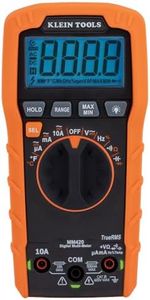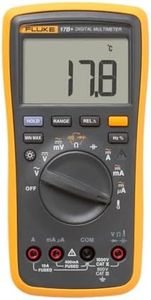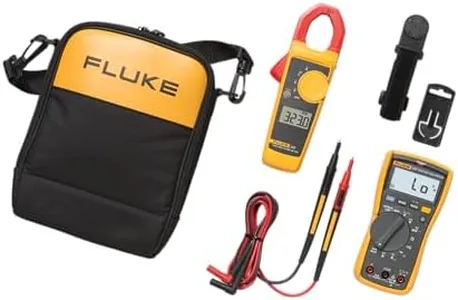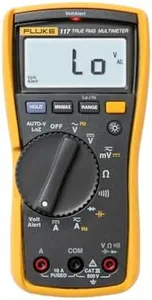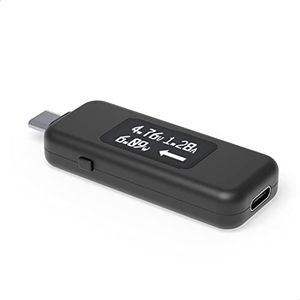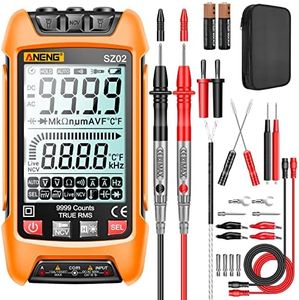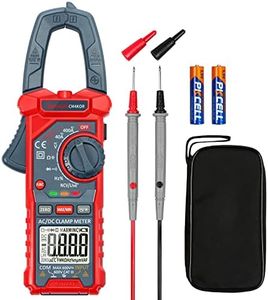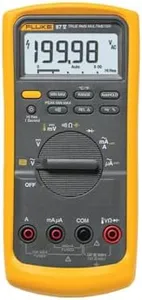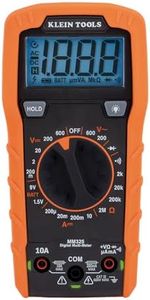10 Best Multimeters 2025 in the United States
Our technology thoroughly searches through the online shopping world, reviewing hundreds of sites. We then process and analyze this information, updating in real-time to bring you the latest top-rated products. This way, you always get the best and most current options available.

Our Top Picks
Winner
Klein Tools MM420 Digital Multimeter, Auto-Ranging TRMS Multimeter, 600V AC/DC Voltage, 10A AC/DC Current, 50 MOhms Resistance
Most important from
6468 reviews
The Klein Tools MM420 is a reliable digital multimeter designed for users who need accurate and versatile electrical measurements. It measures AC/DC voltage up to 600 volts and current up to 10 amps, making it suitable for most household, HVAC, and light industrial tasks. The 50 megaohms resistance range covers common testing needs. Its True RMS technology ensures precise readings even with complex signals, and auto-ranging simplifies use by automatically selecting the correct measurement scale. The meter includes safety features like lead-alert LEDs to confirm proper test lead connections, which helps prevent errors and enhances user safety. The device meets CAT III and CAT IV safety ratings, indicating it is safe for use in tighter electrical environments like residential and commercial settings.
Additional functions such as continuity, temperature, capacitance, frequency, and diode testing add useful flexibility. The backlit LCD screen improves visibility in dim conditions, and physical design elements like a kickstand, test lead holders, and compatibility with magnetic hangers make it convenient to use hands-free. It’s also built to handle drops from up to 2 meters, showing good durability.
The product runs on AAA batteries which may require replacement more often than rechargeable options, and while it covers many features, it might not satisfy users needing advanced industrial-level specs or very high-precision lab measurements. The MM420 serves as a solid choice for electricians, HVAC technicians, and DIY enthusiasts who want a dependable, easy-to-use multimeter with a useful range of functions and strong safety features.
Most important from
6468 reviews
Fluke 17B+ Digital Multimeter, for Electrical Applications, Measures AC/DC Voltage 1000V, Current Measurements to 10A, Resistance, Continuity, Diode, Capacitance, Frequency, and Temperature Testing
Most important from
597 reviews
The Fluke 17B+ Digital Multimeter is designed for a broad range of electrical applications, which makes it quite versatile. One of its major strengths lies in its accuracy and range, with the ability to measure AC/DC voltage up to 1000V and current up to 10A. This makes it suitable for both household and industrial use. Additionally, it covers key measurements such as resistance, continuity, capacitance, diode testing, and temperature, offering a comprehensive toolkit for troubleshooting various electrical issues.
The inclusion of a type K thermocouple for temperature measurement up to 400C is a notable feature for those working with heating and cooling systems. The CAT III 600V safety rating is a critical safety feature, ensuring protection while working on electrical systems in different environments. Its input impedance is designed to give accurate readings without affecting the circuit, which is important for precise measurements.
There are a few drawbacks. The product's weight (450 grams) might be on the heavier side for some users who prefer lighter tools for prolonged use. The battery-powered nature of the multimeter means that ensuring you have spare batteries is crucial to avoid downtime. Additionally, some users may find the lack of advanced features like Bluetooth connectivity or data logging a limitation, especially for more complex tasks requiring detailed records over time. Despite these minor drawbacks, the Fluke 17B+ stands out as a reliable, accurate, and safe tool for both professionals and DIY enthusiasts needing a robust multimeter for various electrical applications.
Most important from
597 reviews
Fluke 117/323 Kit Multimeter and Clamp Meter Combo Kit For Residential And Commercial Electricians, AC/DC Voltage, AC Current 400 A, Includes Test Leads, TPAK And Carrying Case
The Fluke 117/323 Kit is designed for both residential and commercial electricians, making it a solid choice for anyone needing reliable electrical measurements. This combo includes a multimeter and a clamp meter, offering versatility for various tasks. The 117 multimeter provides true RMS measurements, which is essential for accurate readings on non-linear loads, and it also features low input impedance to reduce false readings from ghost voltage. It measures AC and DC voltage and current, making it comprehensive for electrical diagnostics.
The 323 clamp meter complements the multimeter well, with the ability to measure up to 400 A of AC current and 600 VAC and DC voltage, which should satisfy the needs of most electricians. Both tools have excellent safety ratings, ensuring use is safe even in challenging environments.
On the downside, the accuracy rating of 0.5% can be a bit limiting for precision work, especially in situations where high accuracy is critical. Additionally, its reliance on 9V batteries may necessitate regular replacements, and while batteries are included, the ongoing cost could be a minor inconvenience. The combination kit is slightly heavier at just under 2 pounds, which may be a consideration for users who need to carry it around frequently.
Buying Guide for the Best Multimeters
Choosing the right multimeter can be a bit overwhelming, but with a little guidance, you can find the perfect one for your needs. A multimeter is a versatile tool used to measure voltage, current, and resistance, and it's essential for anyone working with electrical circuits. To make an informed decision, you need to understand the key specifications and how they relate to your specific requirements.FAQ
Most Popular Categories Right Now


